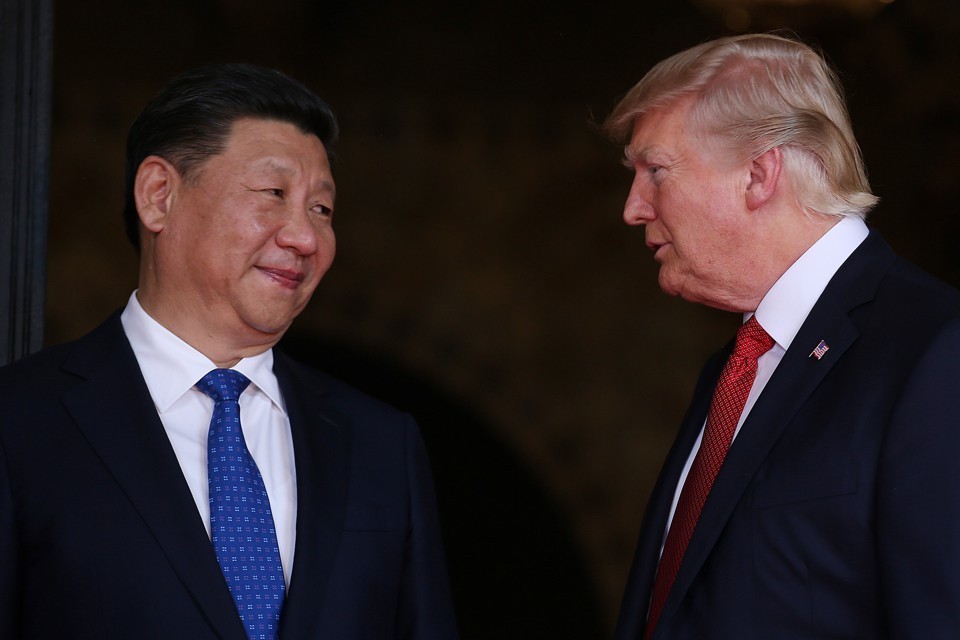
Political Economy Drama on Stock Investment

US/China Trade War Impact on Stock Market

Global stock market has lost the short term growth momentum with new variable of potential US/China trade war impact on stock market, triggered by Trump latest political economy move.
US Interest Rate Hike
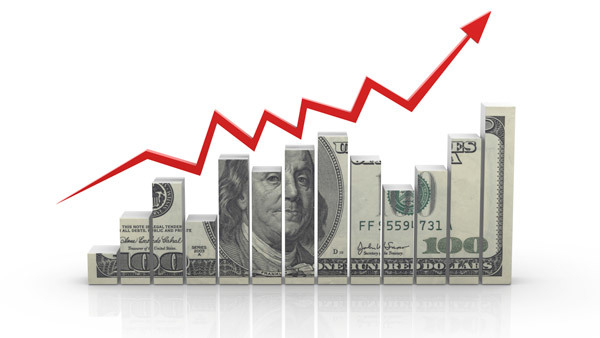

Riding the Dark Horse Stock with Economy Wagon
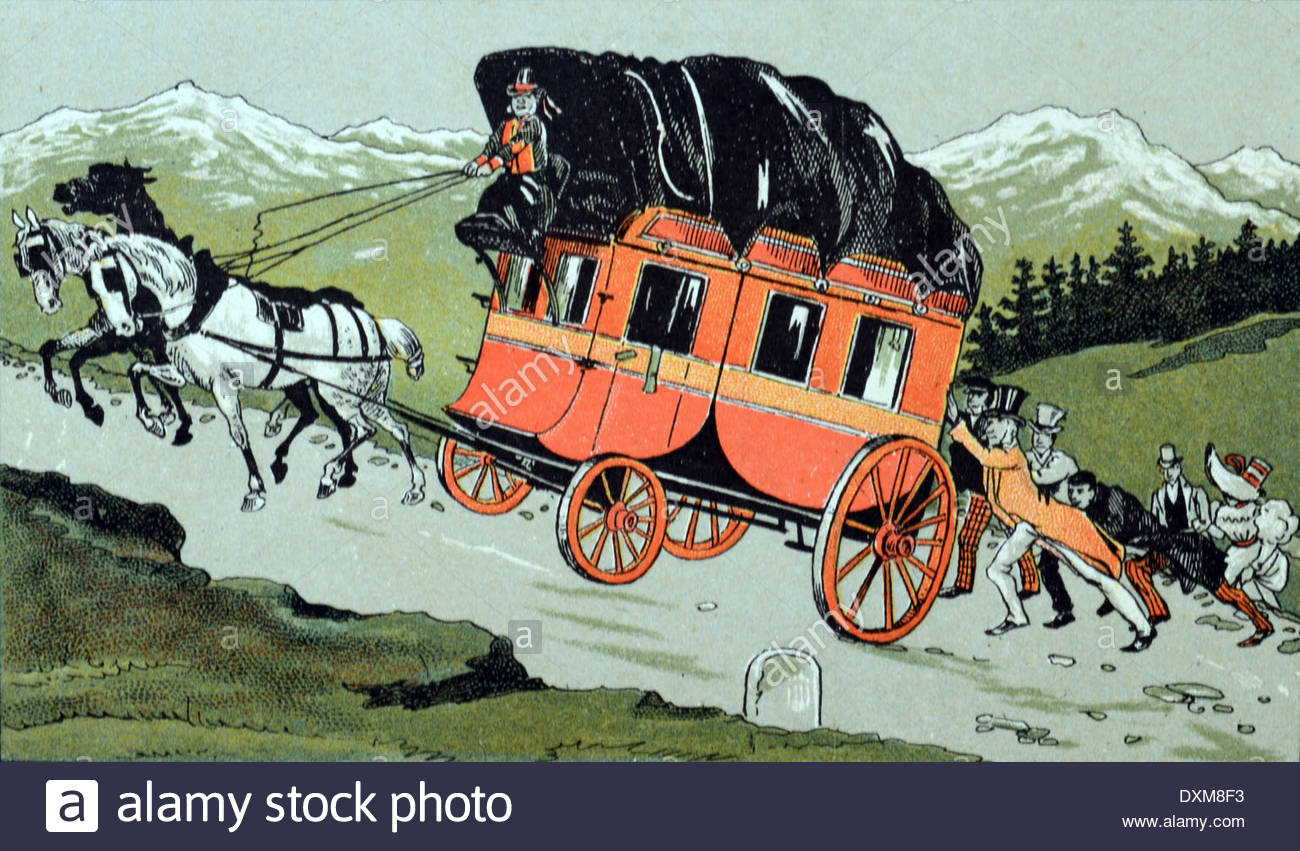
Leveraging on Stock Market Greed and Fear
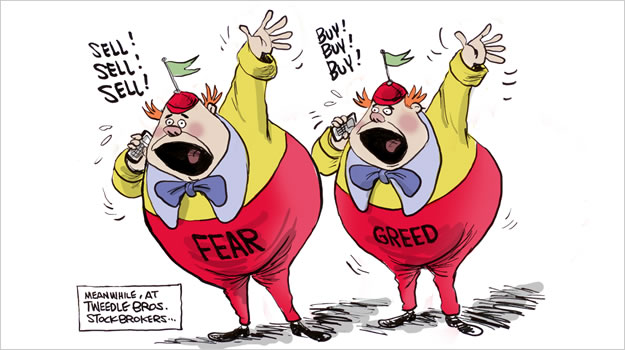
Master the Year of Dog 2018 Stock Market
 I would like to wish Ein55 community, a Happy Lunar New Year of Dog, profiting in 2018 stock market. If you ask doggie, what is the outlook for Year of Dog 2018 Stock Market? The answer mostly likely is “Wang! Wang!” (旺旺 = “prosperous” in Chinese).
I would like to wish Ein55 community, a Happy Lunar New Year of Dog, profiting in 2018 stock market. If you ask doggie, what is the outlook for Year of Dog 2018 Stock Market? The answer mostly likely is “Wang! Wang!” (旺旺 = “prosperous” in Chinese).
Doggie could feel it because the global economy has been bullish with increasing GDP, higher PMI and lower unemployment rate. Likely doggie could chew on bigger bone for its meals because the master is getting rich as well.
Economy and stock are related as if the Master walks the Dog. Sometimes the dog (stock market) runs ahead of master (economy), sometimes it is behind but they are closely connected.
The master has been chasing the dog uphill for quite a few years, recently the doggie decides to take a rest as it is either too tired or scared when seeing a sign of bear coming from far away. It has to wait for more encouragement and assurance from the master to move forward again. It is possible both the Master and the Dog may turn direction to go downhill as they have been away from the Home (Value) for quite some time.
In the world of stock investment, we need to analyze both fundamental (country economy to company business) and technical (prices from Level 1 individual stock to Level 4 global stock market), understanding the risk of greedy high optimism market and opportunity in fearful low market market.
Enjoy a peaceful Lunar New Year 2018 Stock Market with your dream team stock portfolio!
Short-term or Long-term Investing? Choose the One that Works for You!

As much as I love investing, I believe that most of us invest with a similar goal in mind, i.e. to make money, to get our money to work for us, and to attain financial freedom. However, considering how different investors can be when it comes to styles and personalities, there is really no one rule that applies to all. Perhaps, that also explains why the stock market is so confusing and unpredictable in the first place.
There is no way to know what every single person thinks, but we can make our lives easier by knowing our own investing personalities and what floats our boats. Boiling down to the basics, you need to know whether you are a short-term trader or a long-term investor (though in real life, many of us are a mix of both).
Short-term Trading
You will like short-term trading if:
- You are comfortable with keeping an investment for only a short period of a few weeks, or even days.
- Your goal is to make quick bucks to reach a shorter-term goal, e.g. purchasing a car, funding a vacation, etc.
- You are not a fan of doing extensive fundamental research on the businesses that you have invested in, but you are able/ willing to commit a significant amount of time to trading and checking stocks.
- You are ok with taking risks and dealing with profits and losses due to short-term price fluctuations.
- You can accept high transaction costs as a result of frequent trades, which reduces your income in a bigger proportion as compared to long-term investing.
Misperceptions of Short-term Trading
- Short-term trading does not require patience.
Truth: Even for a short-term trader, not every day is a trading day. We need to wait patiently for the best opportunity to long or short.
- Short-term trading is always about buying low then selling high.
Truth: Short-selling (profit from falling in share prices) is equally if not more important. Most people only know how to long the market, and therefore they lose money or end up doing nothing when the market is bearish.
Currently, there is still upside in the last phase of the bull market for short-term traders, possible to buy high sell higher but shorter term position should follow shorter term market signals.
In my free 4hr investment course, I will share with you high-probability trading techniques for short-term traders to profit from the rising and falling stock market.
- There is no need to read up on anything if I am trading short-term.
Truth: Short-term trading, being more speculative and volatile in nature, requires one to react quickly to market news and sentiments. In order to profit in both bearish and bullish markets, one would still need to read up to understand the impact of market-changing factors such as the US Federal Reserve interest rate hike, Donald Trump’s national policies, oil & gas crises, and global quantitative easing (QE), etc. It is important to know the impact of global economy on stock market.
Long Term Investing
On the other hand, you may like long-term investing if
- You are okay with holding an investment for a long period of time, and buy or sell only once every few years.
- You have a longer-term goal in mind, e.g. building resources for your retirement, and you are expecting your investment to increase in value over the long run, and/or also provide income in the form of dividends.
- You prefer fundamental analysis to technical analysis.
- You like value investing.
Misperceptions of Long-term Investing
- You do not have to hold a lot of cash if you are buying at a discount.
Truth: Even if you have met the “golden opportunity” where blue chips have more than a 50 percent discount in stock prices, you as an investor have to accumulate bullets (cash) to be able to make substantial profits when you buy low and sell high.
- If you are investing long-term, you can just sit on your stocks and not care about them for a long time.
Truth: While it may be true that you do not have to react to stock market changes immediately like short-term traders do, you still need to review and reevaluate your stock portfolio from time to time. Even in long-term investing, you would need to do spring cleaning regularly, classifying your stocks into different categories and treat them differently, for e.g. fundamentally-strong stocks for long-term holding, cyclical stocks to sell at a high, and junk stocks to sell at the right time, etc.
============================================================
Time flies, and before we realise it, half of 2017 has already passed. On a global level, stock markets have performed superbly for 1H2017, rewarding investors with attractive returns that have not been seen for quite a few years. How sustainable is the stock market rally then? Will there be a market correction? Take actions now to position yourself for investment.
Blessing in Disguise: US Interest Rate Hike
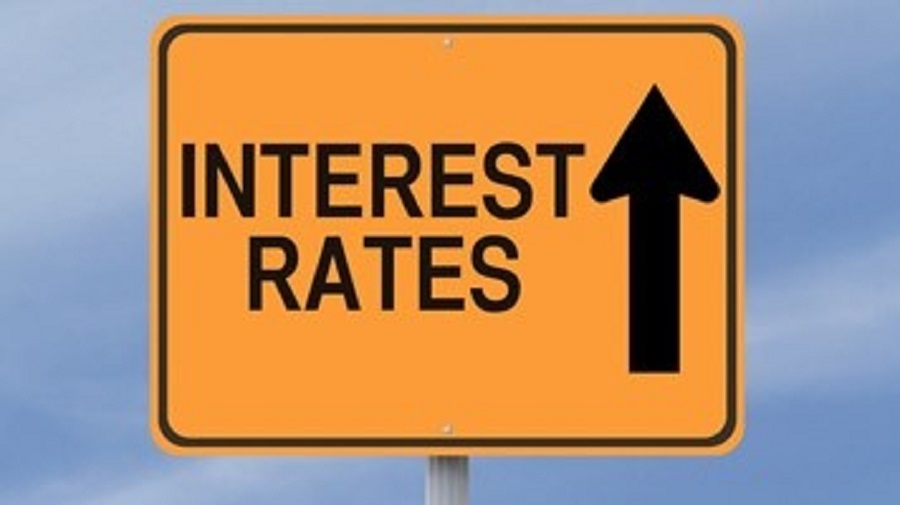
We could observe the emotions of market, how it affects the stocks in both ways. Last few years, when global economy was lagging, news of US interest rate hike is a negative factor. Now, interest rate hike becomes a neutral or even positive news as the market assumes it means the economy is strong, therefore stock market and other investment market (property, etc) will follow the uptrend.
Stock market is emotional, people interpret the market based on the mass market sentiment, following the herd mentality. If we are one of the herd, our investment performance could be average. If the market is a zero-sum game, who will pay for the people who are making money? Unfortunately, some people need to lose money.
Ein55 Investment Style #22 (Blessing in Disguise) describes exactly the stock market and economy relationship in the last few years till now. When I taught this principle several years ago, some graduates may not fully understand why it is a blessing disguise until they observe the QE tapering about 2 years ago and then US interest rate hikes over the past few years. Ein55 Investment Styles will be appreciated more if we could relate to stock market behaviours. This is the reason of my sharing from time to time here.
I have also pointed in many earlier public workshops and investment eBook (Market Outlook) that both QE tapering and US interest rate hike would become blessings in disguise. However, this opportunity is more suitable for a trader to ride the uptrend and one must know when to get out from the uncontrolled roller coaster at new peak one day.
A blessing in disguise could become a real crisis when more people are optimistic. Pay attention when US interest rate is over 2-3% range, a black swan may swim in quietly while others are celebrating for the bull.
Summary of Seminar with Hu Liyang 胡立阳 in Singapore (14 Jan 2017)
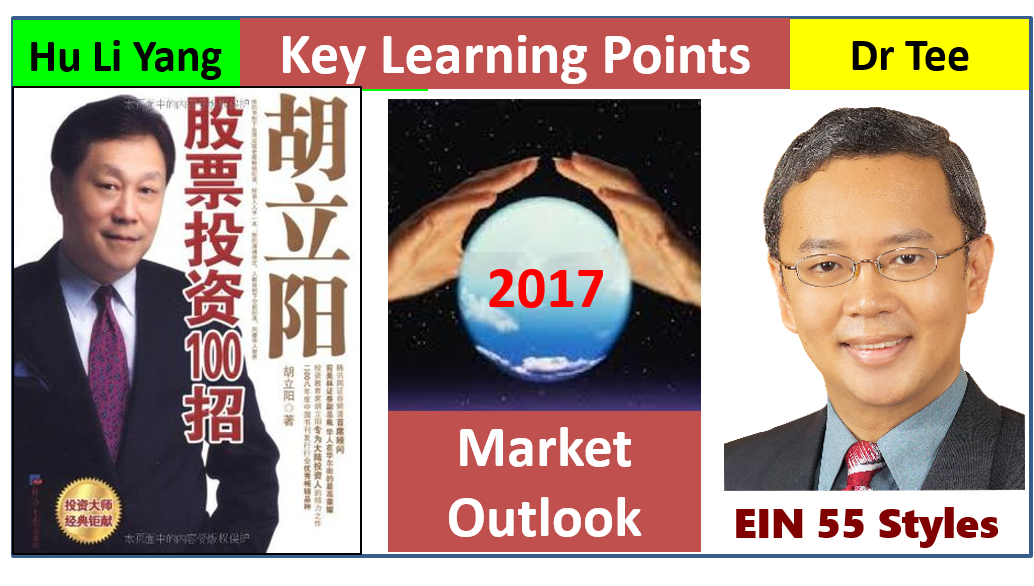
I was invited as a co-speaker in this seminar (14 Jan 2017, Singapore) with Hu Liyang (胡立阳), a famous stock investing guru in Asia. As requested by a reader, I am giving a summary here to show the similarities and differences of my views with Hu Liyang (胡立阳) on Market Outlook for the next few years.
The last time I met Hu Liyang (胡立阳) was probably 4-5 years ago. The first impression of him again is that both of us are getting much older. He has a few more “railway tracks” on forehead while I have many more white hairs.
Both of us have observed many economy cycles in the past few decades, although Hu Liyang (胡立阳) is probably 10+ years more senior than me, that’s why we are mostly aligned in many understanding on market outlook. Hu Liyang (胡立阳) hinted a retirement which I think he deserves it. For me, I don’t feel I am “working” on my interest of investment education, so I don’t feel tired yet. Perhaps one day I may also start a new phase in life, hoping investment is also part of lifelong learning for all the readers.

Similarities in Market Outlook
===========================
1) Final Phase of Bull Market
Both agree that the market is entering the final phase of bull run. I am supported by high optimism of stock market at Level 3 (especially US) and Level 4 (world), while Hu Liyang (胡立阳) is mainly based on interest rate cycle: “bull market starts when interest rate is cut, ends about 1-2 years after interest rate hike in US”
2) Danger Signals for Investment Market
Both agree that bond market is at high risk, bond yield has been at historical low, when bond yield hits 3% (now is 2+% for US 10 years bond yield), the fund is moving from bond to stock and property market, creating risky investment bubbles.
3) Market Cycle Investing
Both agree on market cycle theory. Hu Liyang (胡立阳) uses “pendulum theory”, market will swing from high to low, low to high, sometimes may be even over-corrected, applying his 50% discount theory and other correction factor. I mainly use Optimism to declare the market risk (>75% Optimism) or opportunity (<25 Optimism). Despite the exact methods may be different, both are suggesting buy low sell high based on economy cycles.

Differences in Market Outlook
==========================
1) Timing of Global Financial Crisis
Hu Liyang (胡立阳) has been trying to predict the timing of global financial crisis. I remember a few years ago, he predicted the great crisis may come around year 2013 or 2014. This time, the time bomb is extended to around year 2019. With political economy such as global QE and near zero interest rate for so many years, the current market cycle duration is much longer than last time. I could understand why Hu Liyang (胡立阳) still tries to predict the future as there are too many audience really hope to have a crystal ball to see the future, especially Hu Liyang (胡立阳) has an amazing record to predict the ending time of last global financial crisis in year 2008.
My view is that market cycle duration is unpredictable because it depends on the rate of optimism reaching danger zone of 75-100%. However, there is a predictability within the unpredictability. We just let Optimism shows us the risk level, no need to guess the future. If US takes 10+ years to reach high optimism, market cycle duration will be prolonged. If US behaves like China, stock index is doubled in 1 year, then market cycle will be shorter. This is one of my Ein 55 Investment Styles (of course, Hu Liyang (胡立阳) also has his 100 Investment Styles in his famous book), Optimism is a market thermometer. We will never know when we will have the next fever (eg >38 deg.C), but we will know when we have a fever because we could feel overheated, temperature measured is too high. It is never too late to find a Panadol to cool down the body when we really have fever. Similarly, we will not know when the next crisis may come, but we could guess the probability with market temperature using optimism. When market is having a mild fever (38 deg.C or 75% Optimism) or high fever (40 deg.C or 100% Optimism), we will know as well. The key challenge is whether a trader or investor is willing to take profit (as if taking Panadol), admitting the market is feverish. Based on my observations of past market cycles, more people work harder despite having high fevers, ending up losing what they have accumulated when the market bubble is burst.
2) Factors for Success in Stocks
Hu Liyang (胡立阳) believes the stock market is a probability game of 3 possibilities: up, flat or down in share prices (more of a TA believer); fundamental or business are not as important. He mainly uses “money analysis” to analyze the money flow in economy cycles, combining with many TA methods to predict the mega stock market low and high, both in prices and timing.
I believe in an integration of 3 pillars to be successful in stocks:
2.1) Optimism + Fundamental Analysis (FA, buy giant stock with strong business fundamentals).
2.2) Optimism + Technical Analysis (TA, investment clock to wait for giant to fall down and recover),
2.3) Optimism + Personal Analysis (PA, emotional control) to take actions.
I also believe there is a need to match the strategy with our unique personality:
– short term trader (buy/sell every few weeks),
– mid term trader (buy/sell every few months),
– long term investor (buy/sell every few years),
– life time investor (buy and not need to sell for life).
Warren Buffett, Jim Rogers, Hu Liyang (胡立阳), Jesse Livermore, etc, each investing master or trading guru, could have their own styles of making money, but it may not be suitable for everyone, unless you share the same frequency in mindset. This is the reason I teach the complete Ein55 Styles with consideration of both short term trading and long term investing, FA, TA & PA with economic analysis, showing Ein55 graduates how to customize an unique trading or investing style for individual.
The safest time to buy a stock is when everyone is afraid the sky will fall while the business is still operating normally with consistent performance. This could be a rare opportunity to buy during a crisis; we should learn how to take this advantage to truly buy low sell high.
When Optimism Strategies are combined with Fundamental Analysis (value investing & growth investing), Technical Analysis (support / resistance / trends), and Personal Analysis (mind control of greed and fear), it is very powerful as one can take the right action (Buy, Hold, Sell, Wait or Short) at the right time aligning with his own personality.
The unique Optimism Strategy developed by Dr Tee provides a special advantage to know which investment (stock, forex, property, commodity, bond, etc.) to buy safely, when to buy, when to sell, including the option of long term holding. So far over 20,000 attendees have benefited from Dr Tee high-quality free courses to the public. Take action now to invest in your financial knowledge, starting your journey towards financial freedom.
Learn 10 Strategies of Stock Trading & Value Investing (股市投资十大策略)
1) Master Buy Low Sell High for all investment markets (stock, property, commodity, forex, bond) (买低卖高:股票、房地产、商品、外汇、债券)
2) Profit in bearish and bullish markets, understanding the true impact of US Interest Rate Hike, Bullish Global Economy, Oil & Gas Crisis (环球经济)
3) Long-term investing strategies to outperform portfolio return of Temasek, Li Ka-Shing, Warren Buffett, major stock indices/ETF and other funds (长期投资策略)
4) High-probability Shorting techniques for short term traders to profit from falling stock market while others are losing money or doing nothing (短期卖空技巧)
5) Generate consistent Passive Income with REITS and real property with knowhow of high dividend stock and property market cycles (房地产信托股的被动收入)
6) Methods of Spring Cleaning for own stock portfolio to eliminate junk stocks without any hope (股票大扫除)
7) Time for Global Financial Crisis to buy blue chip stocks on sale (危机也是良机)
8) What to buy (stock screening), When to buy/sell (buy low sell how), How much to buy/sell (risk management): (股票三部曲:买何股?何时买卖?买卖多少?)
9) Fundamental Analysis (FA) + Technical Analysis (TA) + Personal Analysis (PA), integrated with unique Optimism Strategy by Dr Tee (乐观指数:三法一体)
10) Global Stock Market Outlook: emerging opportunities with high potential in Singapore, US, China & Hong Kong stock markets (环球股票市场展望: 新美中港,股票良机)
3 BONUSES for Dr Tee Workshop Attendees:

Bonus #1 for Readers: Dr Tee Investment Forum with over 6000 members (Private Group)
(Please click “JOIN” with link above and wait for Admin approval of membership)
- Market Outlook (stocks, properties, bonds, forex, commodities, macroeconomy, etc)
市场展望 (股票、房地产、债券、外汇、商品、宏观经济等) - Optimism/ Fundamental / Technical / Personal Analyses
(乐观指数 / 基本分析 / 技术分析 / 个人分析) - Investment risks & opportunities (投资风险及机遇)
- Dr Tee graduates events and activities updates (Dr Tee学员活动最新消息)
Bonus #2 for Readers: Dr Tee Investment eBooks x 2
Fresh from Oven: Download the latest 2 eBooks by Dr Tee on “Global Stock Market Outlook“, covering comprehensive investment topics: Stock, Property, Commodity, Forex, Bond and Political Economy & “Dream Team Portfolio” with Top 10 global stocks for capital gains and passive incomes. Past readers have benefited, learning Simple and Powerful strategies which deliver incredible results in stocks. Learn to position for each market crisis and opportunity with Optimism Strategies.
Click here to join future Dr Tee (Ein55) investment courses: www.ein55.com
New Ein55 Investment Style 2017: Frog Cooking Theory
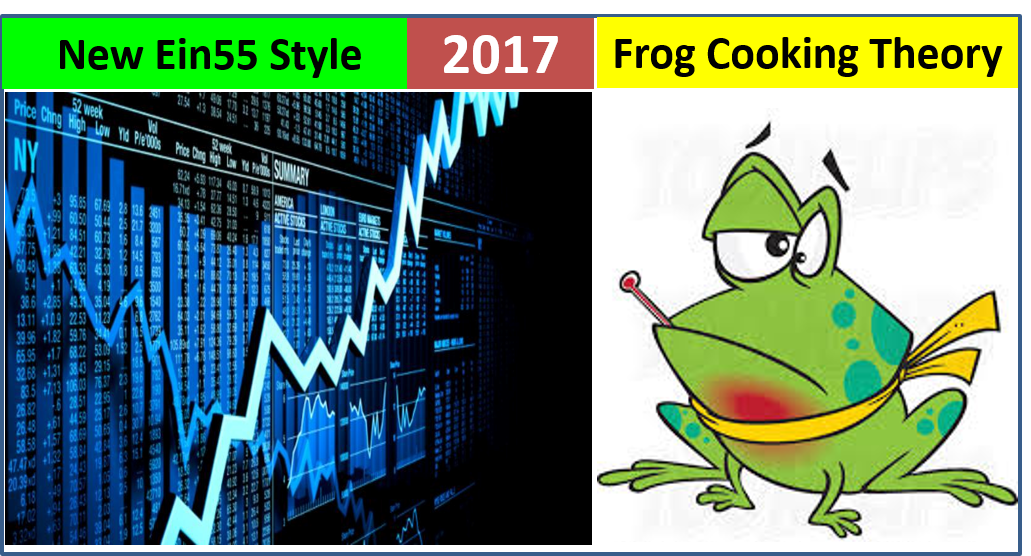
Although both were/are at historical peak stock prices with high optimism, there is a key difference between bullish stock markets of China SSEC (Year 2015) and US S&P and DJI (Jan 2017). The chart below shows that the rate of index growth is much faster for China SSEC, therefore the high optimism was not sustainable, going up and coming down within months. US stock market is a gradual warming process, although feverish, it is more sustainable.
We may have heard the story of a frog swims comfortably in warm water, could be killed unknowingly when the water is heated up gradually. A frog could adjust the body resistance to temperature change, but there is a limit for the tolerance, eventually it will get killed if the water temperature is too high because it is so used to the environment, does not know how to jump out of the danger.
Sounds familiar to those in the stock market? If a stock trader or investor behaves like a frog, adjusting to the cooling water (i.e. stock market correction) and warm water (i.e. stock market rally), mild bearish or mild bullish market, but eventually when stock market hits extreme high optimism, one may not know how to escape when the market melts down, not able to react fast enough as they may not feel the risks when stock market prices grow up gradually.
The US stock market has been bullish recently, leading the global stock markets in the same direction, ideal for short term traders to buy high sell higher. Dow Jones Index is above the critical 20,000 points, which could be the next future support over the time, while S&P 500 is near to the next milestone of 2300 points. As long as the water temperature of stock market is heated gradually, best with some cooling in between, the “frogs” could still be safe for a prolonged period of time until a Black Swan swims in one day, then the unprepared traders or even investors, could be caught by surprise, may not know this will be a real crisis.
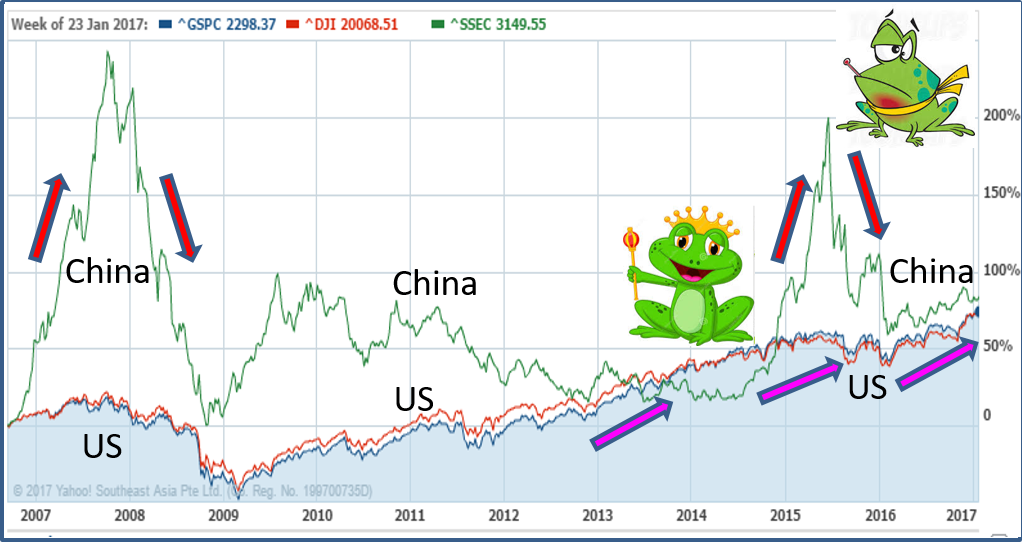
You could call this as a new Ein55 style but since Dr Tee already has established 55 Investment Styles, I won’t give a new number, eg. #56. You may know the reason if you have attended my free courses to the public before. This investing concept was already integrated into Optimism Strategies, it is just I did not label with a style in the past. We need to monitor the rate of change in Optimism which is different from Technical Analysis which focuses only on stock prices. Ein55 Investment styles are usually generalized concepts with interesting stories, helping learners to apply the methods easily in daily life experience of investment markets.




